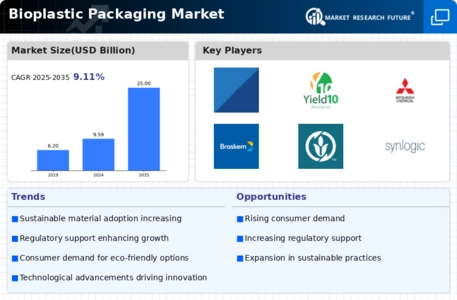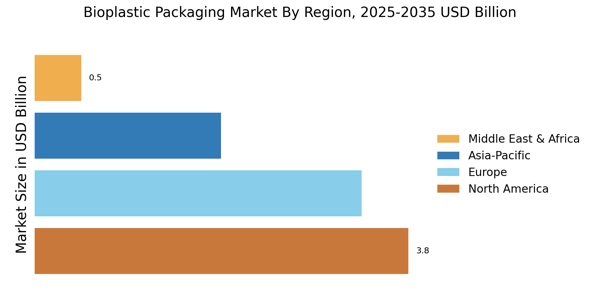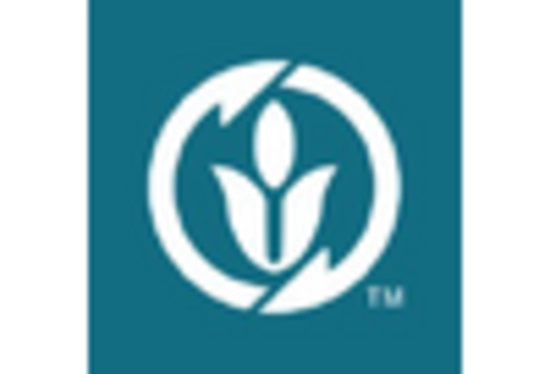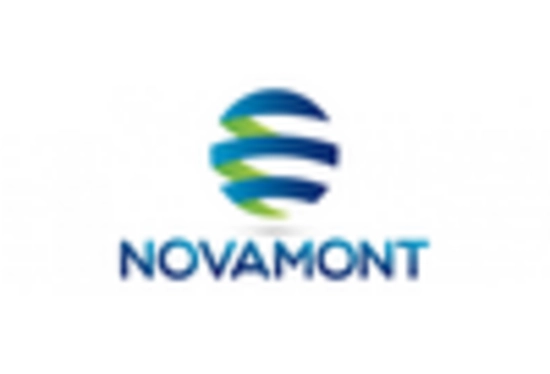Corporate Sustainability Goals
The commitment of corporations to sustainability is increasingly shaping the Bioplastic Packaging Market. Many companies are setting ambitious targets to reduce their carbon footprint and enhance their environmental stewardship. This trend is evident as major brands are transitioning to bioplastic packaging solutions to meet consumer expectations and regulatory requirements. Market analysis indicates that businesses adopting bioplastics can improve their brand image and customer loyalty, which is essential in today's competitive landscape. As more corporations embrace sustainable practices, the Bioplastic Packaging Market is likely to witness accelerated growth, driven by the demand for eco-friendly packaging solutions.
Rising Environmental Awareness
The increasing awareness regarding environmental issues is a pivotal driver for the Bioplastic Packaging Market. Consumers are becoming more conscious of the ecological impact of traditional plastics, leading to a surge in demand for sustainable alternatives. This shift in consumer behavior is reflected in market data, indicating that the bioplastics segment is projected to grow at a compound annual growth rate of approximately 15% over the next five years. As individuals and organizations alike prioritize sustainability, the Bioplastic Packaging Market is likely to experience heightened interest and investment, fostering innovation and expansion in bioplastic solutions.
Innovations in Bioplastic Materials
Technological advancements in bioplastic materials are significantly influencing the Bioplastic Packaging Market. Innovations such as the development of biodegradable polymers and bio-based plastics are enhancing the performance and applicability of bioplastics. For instance, recent studies suggest that new formulations can improve the mechanical properties of bioplastics, making them more suitable for various packaging applications. This evolution in material science not only broadens the scope of bioplastic usage but also attracts investment from major packaging companies seeking to align with sustainability goals. Consequently, the Bioplastic Packaging Market is poised for substantial growth as these innovations gain traction.
Government Initiatives and Regulations
Government initiatives aimed at reducing plastic waste are a crucial driver for the Bioplastic Packaging Market. Many countries are implementing regulations that encourage the use of biodegradable materials and impose restrictions on single-use plastics. For example, recent legislative measures have mandated the reduction of plastic packaging in favor of sustainable alternatives, thereby creating a favorable environment for bioplastics. This regulatory support is expected to propel the bioplastics market, with projections indicating a potential increase in market share by 20% within the next few years. Such policies not only promote environmental sustainability but also stimulate economic growth within the Bioplastic Packaging Market.
Consumer Preference for Eco-Friendly Products
The shift in consumer preference towards eco-friendly products is a significant driver for the Bioplastic Packaging Market. As consumers increasingly seek products that align with their values, the demand for bioplastic packaging is on the rise. Market Research Future indicates that approximately 70% of consumers are willing to pay a premium for sustainable packaging options. This trend is compelling manufacturers to innovate and expand their bioplastic offerings to cater to this growing market segment. The Bioplastic Packaging Market is thus positioned to benefit from this consumer-driven demand, fostering a more sustainable future in packaging.


















Leave a Comment